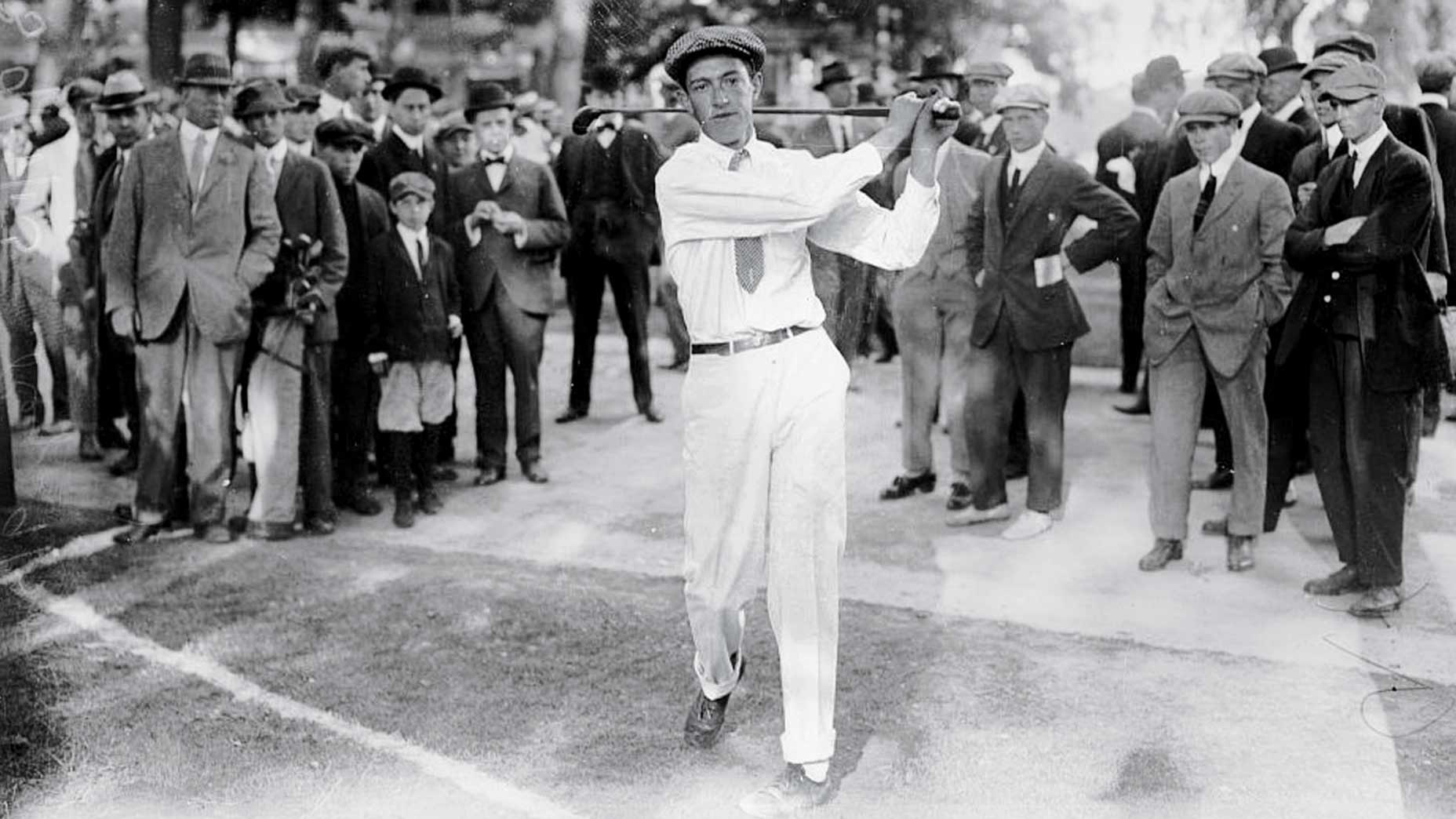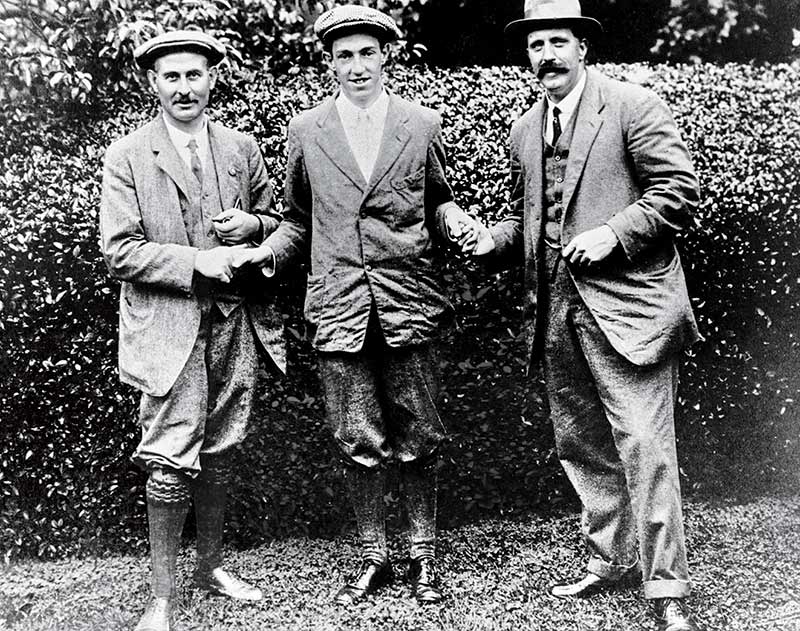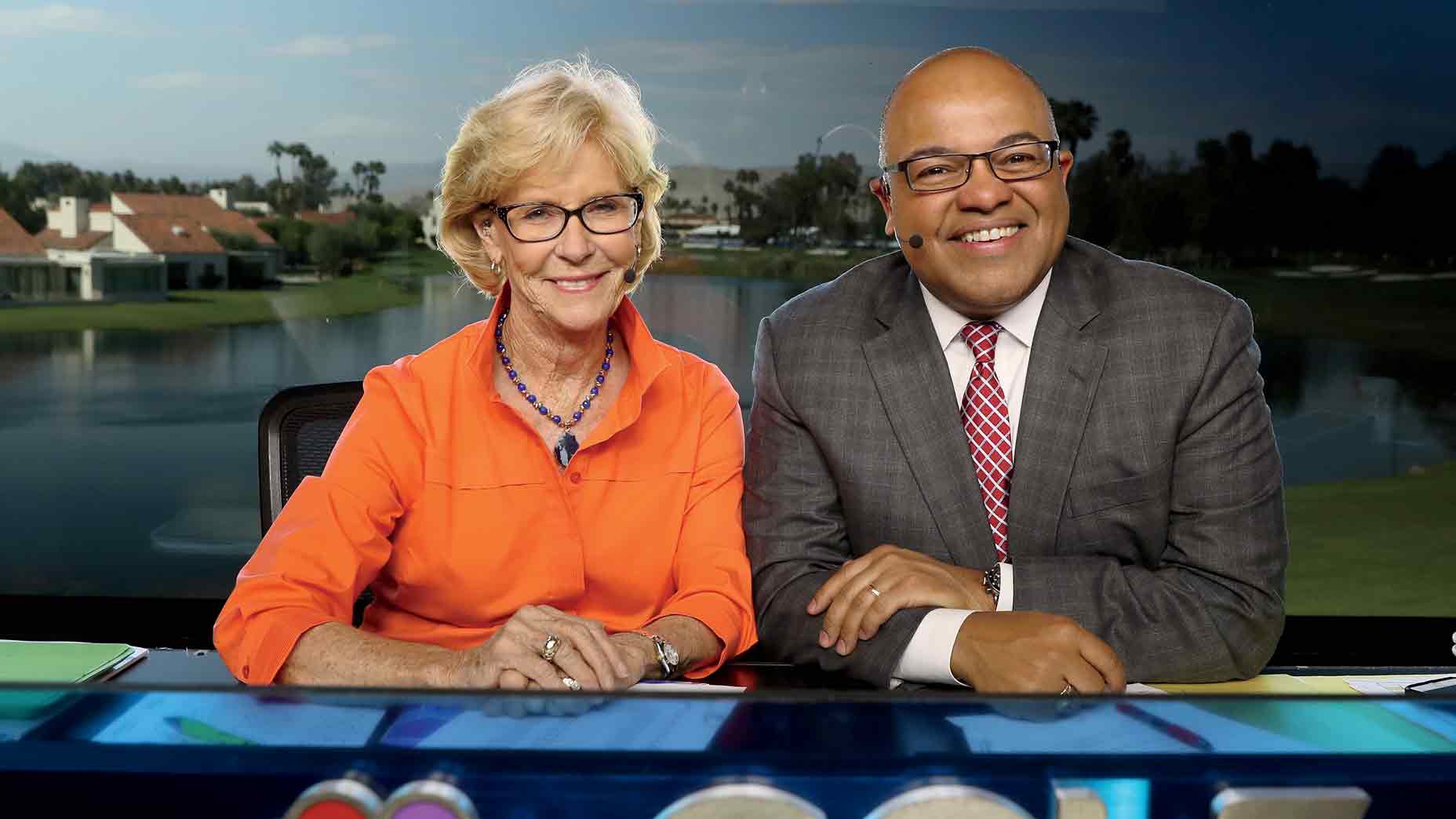
Realize it or not, Francis Ouimet’s U.S. Open win at The Country Club in 1913 also invented something: golf as epic drama.
Alamy Stock Photo
When amateur Francis Ouimet won the 1913 U.S. Open at The Country Club, 50 years had elapsed since the Battle of Gettysburg, and 87 years had come and gone since the deaths of Thomas Jefferson and John Adams on the same day in 1826. As you read this, 109 years have passed since Ouimet whipped Harry Vardon and Ted Ray in Brookline, Mass.
In 1913, J.P. Morgan, his nose and Harriet Tubman all died, and Bear Bryant, Jimmy Hoffa, Vince Lombardi, John “the Frozen Tundra” Facenda, Jesse Owens and Richard Nixon were born. Ouimet was 20 years old, hatched 10 years before Ford Motor Company was founded and debuted its Model A. The first World Series was played the same year, and, while the R&A’s Open Championship was contested for the 53rd time in 1913, golf had only been played in a semi-organized fashion in the United States for 25 years.
The previous two paragraphs are not auditioning for a role in a Ken Burns documentary, but, rather, pointing out that Ouimet won the 19th U.S. Open during the antiquity of golf in the U.S. His accomplishment on that long-ago September Saturday took place on a rain-soaked track two months prior to the Wright brothers’ first flight — and yet, it is still the beating heart of what modern-day players and fans feel every time a U.S. Ryder Cup team takes the field, or when Tiger Woods holes a chip at the 16th hole at Augusta National and it registers on the Richter scale, or when we collectively punch a hole in the sky to the tune of Verne Lundquist’s greatest hit (“Yes, sirrrrrr!”) as Jack Nicklaus — one final time — splatters our souls with goose bumps as a wobbly birdie putt falls on Sunday at Augusta’s 17th green.

Francis Ouimet won the most important tournament in the history of U.S. golf with 10-year-old Eddie Lowery on the bag.
George Rinhart/Corbis/Getty Images
Realize it or not, Ouimet’s U.S. Open win at The Country Club in 1913 is what you’re blown away by in those rare moments when championship golf is ethereal. You see, in the age of Henry Ford and Orville and Wilbur Wright, Francis Ouimet also invented something: golf as epic drama.
In Ouimet’s story, as is often told, he is a caddie at The Country Club and just fiddles with the game, sneaking on the course when no one is looking. Out of nowhere, the U.S. Open falls in his backyard. Unknown and brimming with pluck, he wins over the local toffs who allow him to play in the national championship. He is David to Harry Vardon’s Goliath and Stan Laurel to Ted Ray’s Oliver Hardy. Ouimet is outplucked only by his 10-year-old sage on the bag, Eddie Lowery.
Closer to the truth is that in the very small community of superb golfers in the U.S. at the time, Ouimet was a rising star — he was also a junior member at Woodland Golf Club, about seven miles from The Country Club and the Ouimet family home on Clyde Street in Brookline.
Three weeks before the U.S. Open at The Country Club, Ouimet was nearly a medalist during the two-round U.S. Amateur, qualifying at Garden City Golf Club, in Long Island, N.Y. Before match play began, the New York Times noted that “a new factor in national golf was developed yesterday at Garden City… the winning of the medal for the lowest score in the [first] round… was a noteworthy victory for Mr. Francis Ouimet… hitherto little known in these parts… he has been in national tournaments before but has never been a factor…”
In short, Ouimet didn’t come out of nowhere; he’d been aiming and trying to win at the highest level since he won the 1909 Boston Interscholastic Golf Championship. At Garden City, his level of play was exceptional, despite a second-round loss to eventual champ Jerry Travers.
Wrote Bernard Darwin of the Ouimet v. Travers dustup at Garden City: “I have scarcely ever seen a match between two amateurs in which the play went on hole after hole with so few mistakes and so many brilliant shots; there were, too, so many deadly thrusts by one party, met with such unwavering parries by the other, and neither man ever cracked or even weakened.”

Vardon (left) and Ray were savvy vets and heavy favorites.
PGA of America/Getty Images
About 8,000 spectators turned out to see the 18-hole playoff on Saturday, Sept. 21, 1913. That’s quite a mob to watch a game most of them likely knew little about. Very likely, the locals were spurred by this front-page headline in the Boston Daily Globe: “It is Ouimet Against Great Britain’s Best in Playoff. America’s Hopes Now Lie in Amateur. Professionals All Fail at Country Club. National Golf Title at Stake Today.”
That it was a Saturday helped the turnout in support of Ouimet, but you’ve surely heard timing is everything. In 1911 and 1912, professional John McDermott became the first American to win the U.S. Open, and the runners-up both years were also American. Outside the tiny world of golf, no one much noticed.
Ouimet, however, had John Bull as a foe. Harry Vardon was the preeminent member of the Great Triumvirate, a trio that combined to haul in 16 Claret Jugs from 1894 to 1914. He was in the U.S. on a promotional tour, and it was his first appearance at the U.S. Open since he’d won the title in 1900 at Chicago Golf Club. Ted Ray, to speak plainly, was no Harry Vardon, but he’d won the 1912 Open Championship.
With home cooking and the locals on his side, young Ouimet made short work of Vardon and Ray in the playoff, carding 72 to Vardon’s 77 and Ray’s 78. Seasoned vets Vardon and Ray took it in stride. Both thought Ouimet would show some nerves and they would pounce, but the kid was rock steady all day.
“I wonder,” wrote one reporter, “what were the expressions on the faces of the Englishmen at home when they read on the bulletin boards of the newspapers or heard in their clubs of the outcome of the playoff. I can imagine that those who read the news through spectacles or eyeglasses wondered if the oculists had done something in the grinding process to make those glasses read topsy-turvy, and that those who read without glasses thought it was about time to get them.”

Francis Ouimet won the most important tournament in the history of U.S. golf with 10-year-old Eddie Lowery on the bag.
George Rinhart/Corbis/Getty Images
After dispatching Vardon and Ray, and escaping the hoopla, Ouimet spent the evening at the theater. The next morning, he went to church and spent the day at home with his family until they had dinner together. A writer who joined them noted that Ouimet’s father reprimanded the new U.S. Open champion a few times for goofing around with his siblings.
The following year, 1914, the mild-mannered Ouimet achieved his primary ambition in golf: He won the U.S. Amateur in a 6 and 5 final over Travers at Ekwanok Country Club in Manchester, Vt. In 1931, he won the Amateur again in a 6 and 5 final at Beverly Country Club in Chicago. In 1961, Ouimet become the first American to be named captain of the R&A, closing a loop that began with his win in 1913 at The Country Club.
Upon his death in September 1967 — 54 years to the week of his epic match against Travers in the 1913 U.S. Amateur — the New York Times noted “that [1913 U.S. Open] victory by a slim 20-year-old amateur furnished front-page news for newspapers throughout the world. Overnight, Ouimet became a new sports hero as he brought attention to a game that had previously created little international interest.”











